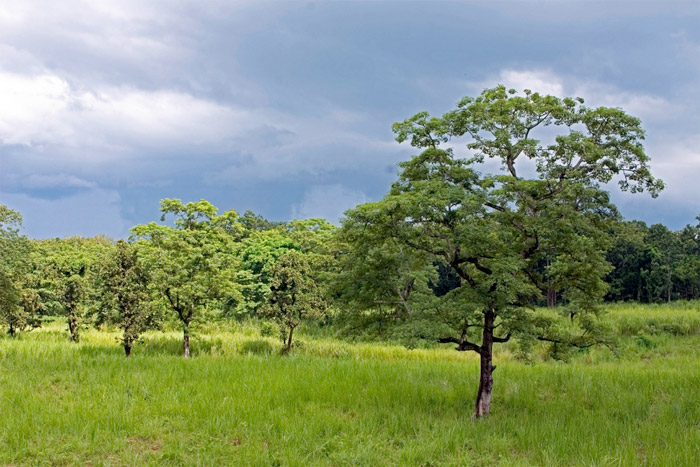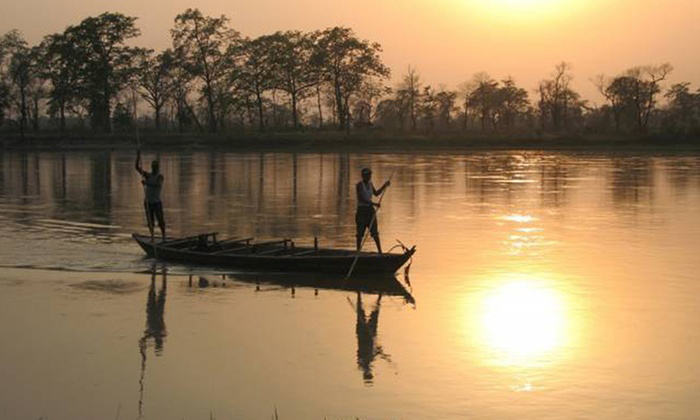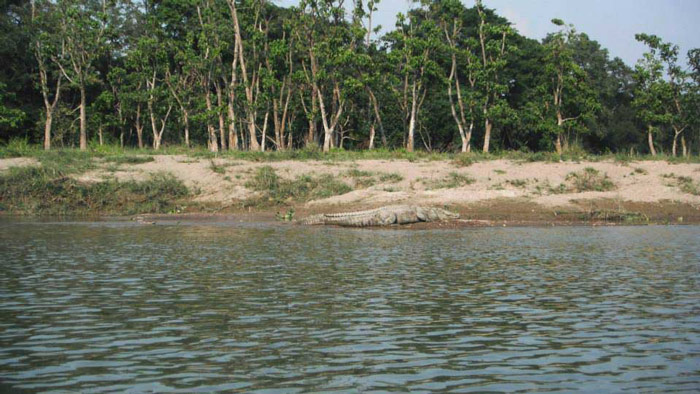Chitwan National Park - Nepal
The United Nations Scientific, Educational and Cultural Organization has recognized Chitwan National Park of Nepal as a World Natural Heritage in 1984.
Chitwan National Park - World Cultural Heritage in Nepal
Chitwan National Park is located at the foot of the Himalayas , Chitwan is one of the few remaining monuments unaffected by the expansion of countries like India and Nepal. Chitwan National Park has a particularly rich vegetation, a diverse animal world including rare breeds like Bengal tiger, 1 horn rhino .

Chitwan National Park was founded in 1973 and is Nepal's first national park. The park has a total area of 93,200 hectares, extending through four districts: Chitwan, Nawalparasi, Parsa and Makwanpur. In 1996, the area of Chitwan National Park was 75,000 hectares including private land, forests and lakes . By 2003, the Park was expanded by the Government planning a buffer zone with the purpose of protect the park, from which the park increased its area to 93,000 ha.

 Chitwan National Forest and Mangrove Forest System.
Chitwan National Forest and Mangrove Forest System.
Forest area in Chitwan National Park accounts for 60% of the total area of the park, the park protection buffer zone is a mangrove forest area with a rich flora. Besides the area of forests and mangroves, the park area also has an area for cultivation including a system of terraced fields formed from rocks and mud through many years of storms and floods.
At Chitwan National Park, scientists and animal researchers found the appearance of Bengal tigers , which is believed to be the only place in the world where this tiger remains. In addition, about 400 extremely rare Asian rhino individuals are also found here. The second largest numbs in the world are just behind the 1 horn rhino of Kaziranga National Park in India. Besides, some other rare and precious animals also chose Chitwan National Park as a place of bear, bull, leopard, wolf . Other animals such as civets, wild cats, hyenas, Jackals, wild boars, monkeys, otters, porcupines also grow here. Especially endangered crocodile species also reside in this park. In addition to crocodiles, there are about 100 large and small fish species living in rivers, lakes and mangroves here.



From top to bottom: Crocodile;Bengal Tiger;Asian rhinoceros - rare animals in the world currently residing in Chitwan Park.
In 1973, Rhino 1 rare Indian horn lived in Chitwan National Park died. Since then, the protection of wild animals here has been particularly focused. There have been searches, activities to protect Begal tigers - a rare species and especially important because the number of individuals of this species worldwide is significantly reduced. In a survey, research, statistic scientists and zoologists at Chitwan have a total of more than 350 species of birds residing in the gray-headed eagle and moon vulture living in the Himalayas.


Some other animals at Chitwan Park
Chitwan National Park is recognized as a World Natural Heritage by the following criteria:
Criterion (vii): Chitwan National Park has a majestic landscape, covered by a lush vegetation. Rivers, lakes and forest areas have changed to make Chitwan's landscape one of the most beautiful in Nepal.
Located in the river basin and valley, plus the system of forests and mangroves have made the park become a place with diverse vegetation and a rich animal world. In addition, the terraced fields and the life of the indigenous inhabitants here also contribute to the diversity and character of the mysterious land.

Standard (ix): Chitwan National Park has a well-preserved ecosystem and natural vegetation that is less affected by human life and human encroachment.
Standard (x): The combination of mangrove forest area which is the buffer zone of the park with the forest and delta system has created an ideal habitat for animals and plants. In addition, the occurrence of rare animals along with the diversity of animals also adds to the special element of this area.
Since 1980, the Government of Nepal has many regulations to protect the natural area of the park and limit hunting and exploitation of illegal resources in the park. However, because there are many rare and precious animals, there is an abundance of animals and large forest areas that produce many fresh fruits, causing illegal exploitation and hunting to increase rapidly.
In particular, the theft of rhino horn makes this animal at risk of extinction and is strongly condemned by the world. In an effort to reduce that situation, the Nepalese Government has sent an army to protect and punish cases of illegal hunting. Even so, the threat of wildlife hunting is still a threat to the natural environment of Chitwan National Park. International organizations as well as world wildlife and wildlife conservation funds have been supporting the Nepalese government in preserving and developing this Natural Heritage.
- Sagarmatha National Park - Nepal
- Tigers change tactics to avoid people
- Nepal lost its rare rhino
- Interesting facts about Nepal
- Yor-Don National Park calls for help
- Te Wahipounamu, southwestern New Zealand national parks
- Þingvellir National Park (Thingvellir)
- Rhino in Cat Tien National Park is under threat
- Detecting toad, mint banana in Xuan Son National Park
- Discover new lizards in Peru National Park
- Managing and protecting Bai Tu Long National Park
- Discover the village over 1000 years old in the US national park
 Suzhou classic bonsai garden - China
Suzhou classic bonsai garden - China Chau Nguyen Dynasty
Chau Nguyen Dynasty Thai Son Mountain - World Wonder
Thai Son Mountain - World Wonder Ancient villages of Shirakawa-go and Gokayama
Ancient villages of Shirakawa-go and Gokayama